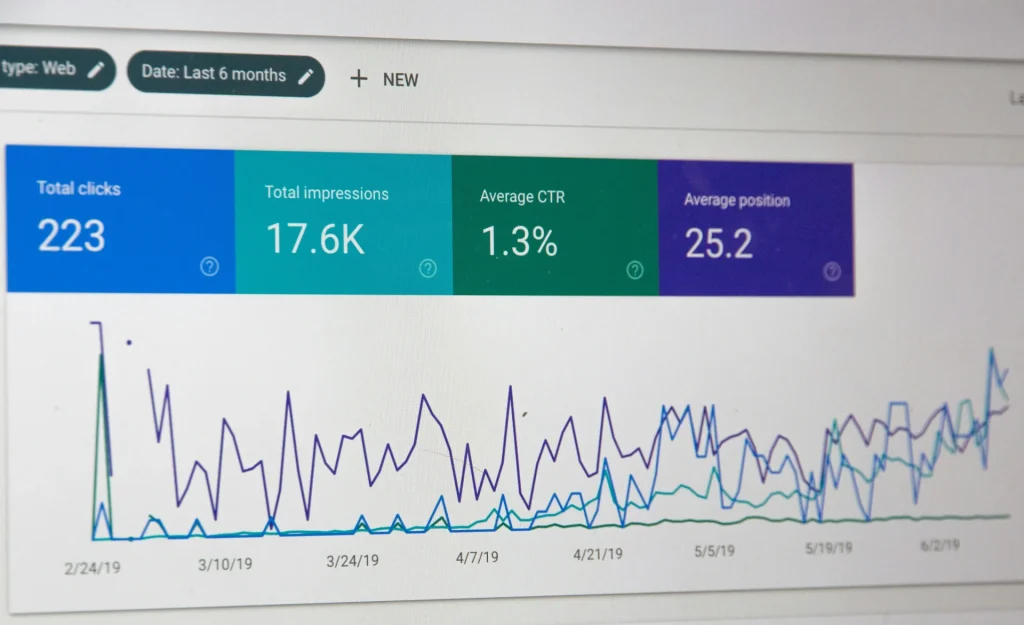Measuring PR Success:
KPIs That Actually Work in Media Relations

Author: TR Team
Whether you’re a seasoned PR strategist or a CMO who has worked with a few agencies over the course of your career, one thing is obvious: Measuring public relations results is far from an exact science. There is no gold standard in the PR industry for tracking and measuring success. And that can be a frustrating reality when your marketing budget is on the line.
But there are certain metrics that, when considered holistically, can paint a clearer picture of a campaign’s results.
Your key performance indicators (KPIs) for a PR campaign should always reflect your brand’s overall business and marketing goals. Industry leaders like SaaS platform Meltwater agree — KPIs should go deeper to measure performance against those predetermined big-picture brand targets.
The best PR agencies will work closely with client leadership to choose the right KPIs to track success. These metrics can showcase the ROI that results from earned media placements.
In the advertising and marketing spheres, metrics like sales conversions, website visits, readership numbers, and tracking links are the standard measurement tools. But those metrics simply don’t exist in PR.
To help you ensure you’re getting the most out of your PR investment, we’ve compiled a few of the core KPIs that actually work in media relations to track a campaign’s success.
1. Media Impressions
One of the most well-recognized metrics in PR is a calculation of the total audience reached, or the unique numbers of visitors to an outlet’s website per month. This is generally a solid indicator of how many people may have seen the placement — similar to measuring reach on a social media post. The best PR agencies will set impression benchmarks and then work to surpass them.
2. Proactive Pitches
PR practitioners aid journalists in offering expert resources, interviews and thought leadership content that might be a resource to their coverage area. In doing so, we are constantly reinforcing the brand’s purpose and capabilities to key members of the press. Try this as a KPI: How many different ways can a PR and marketing agency tell your story? At Trust Relations, one strategy we might use is to set a goal of delivering on a set number of unique, proactive media pitches each quarter.
3. Secured Coverage
When working with a PR agency, your goal is to reach your target audience. For publicists, that means curating a roster of media contacts and outlets that can reach those eyes and ears. The best PR agencies will create an ever-evolving media database to track their relationships — and then have a KPI to reach a certain number or percentage of those contacts each month. The goal is to cast a wide net in terms of publication types to secure a variety of coverage from a mix of respected, niche trade outlets and large, mainstream publications.
4. Key Message Inclusion
There are many different types of earned media, whether it’s a feature piece, inclusion in a roundup or positioning the brand executive as an authoritative figure on a subject. A PR agency will strive to include a certain number of key messages in these media placements as a KPI, rather than focusing on the tier of the outlet it appears in. At Trust Relations, our team has a key messaging document in place which we use as a reference for all pitches and client interviews.
5. Byline Placements
Organic media coverage extends beyond a quick quote or mention in an article. Sometimes, it’s your spokesperson who is doing the writing! (Or working with a highly-skilled copywriter to give that impression.) A byline or contributed article can be an ultra-effective way to share your brand story. After all, a bylined article is written from your brand’s own unique perspective, putting you in control of the messaging and points that you want to convey within the editor’s requirements. Your agency might develop a KPI around bylined articles written or placed, when this tactic is in play in your PR program.
6. SEO Rankings
It’s crucial in the modern practice of PR that the agency has a deep understanding of your brand messaging, including target keywords. To help support our clients’ SEO goals, our KPIs for a campaign often include the number of placements that mention at least one or more of the brand’s target keywords. This is one obvious way that PR can help a brand to rank higher on search engine results pages (SERPs). Within that same goal, the best PR agencies strive for placements in media outlets that have a domain authority ranking of 82 or higher.
7. Periodic Sentiment Survey
Brand awareness can also be its own KPI. But to leverage it most effectively, it’s important to understand where things stand with your brand’s target audience and sentiment. At Trust Relations, we are huge proponents of brand sentiment surveys. If you conduct a survey at the outset of a campaign to understand what your brand’s starting point is for brand awareness and perception, your PR team can leverage that insight to determine the best target metrics to address your unique needs. We always recommend repeating these surveys each quarter to ensure the benchmark has been met and to shape future brand awareness KPIs.
No matter which of these KPIs you might be tracking, the overarching mission remains the same — to increase your brand’s awareness and visibility. By using the right metrics, a good PR agency can demonstrate a holistic picture of ROI to the brands they represent. Your brand awareness only compounds with that continued success.
If you’re ready to share your story, and want to work with a PR and marketing agency that’s actually transparent about their success metrics, we’re here for you. Request a consultation with us.
AUTHOR

Trust Relations Team
